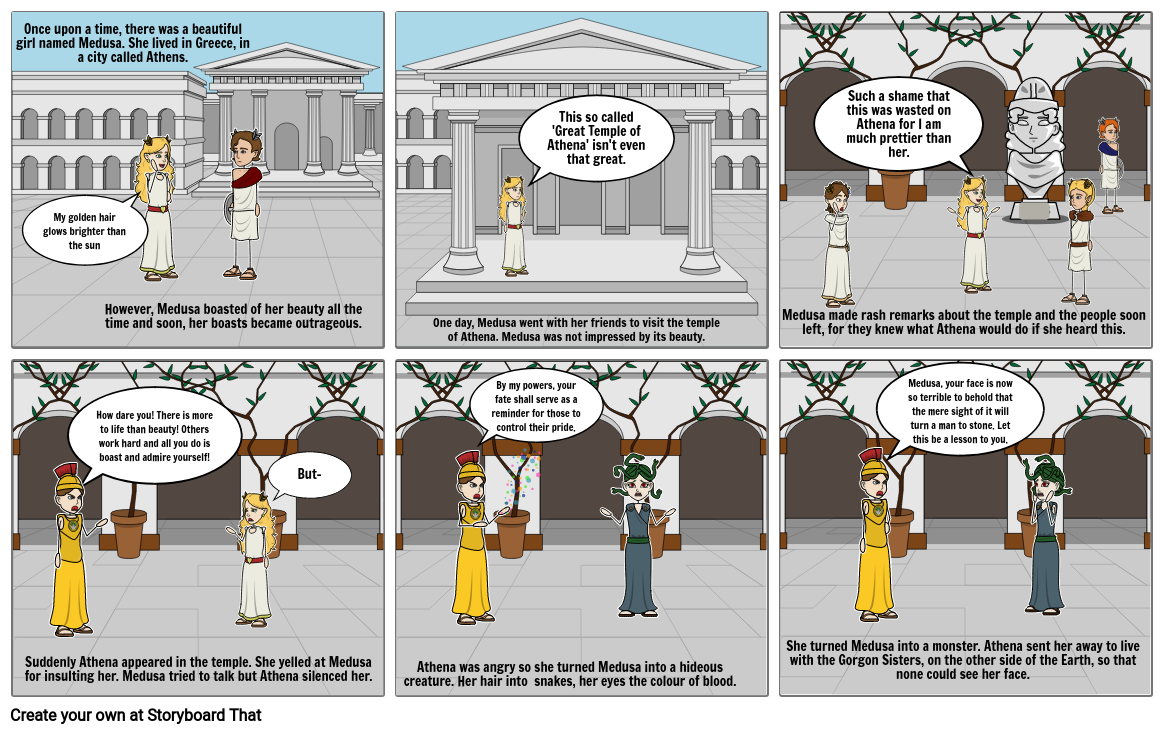

Athena caught them and was very angry: she directed her vengeful wrath entirely against Medusa, transforming her into a gorgon, a hideous monster, her lovely hair replaced by snakes and her beautiful face turned so ugly that any man she gazed upon would turn to stone. One day, as Medusa was worshipping in a shrine of Athena, Poseidon surprised and ravaged her – an outrage against the sacred location. Among those was Poseidon, God of the Sea. Among the three girls, Medusa was the only one to be mortal, but she was of radiant beauty, especially her wonderful hair, and consequently had many suitors. The parents were both children of Gaia, the personification of Earth, which made their daughters cousins to the Olympian Gods. The standard tale of Medusa is as follows: at some point, back in the mists of time, there were three beautiful sisters, Medusa, Stheno and Euriale, children of the sea deities Phorkys and Keto. But we have to start somewhere, so let us begin with the myth. It is not easy to tell the tale of Medusa, image and character, as we cannot be certain which came first. Metope from an Archaic temple at Selinunte, ancient Selinous, on Sicily, Palermo Museum. Perseus slaying Medusa with Athena’s assistance. Nor does it explain the interesting variations of her image that occur in later (Hellenistic and especially Roman) antiquity. Many other characters who play a more prominent role in myth and legend are depicted less frequently than her.

Medusa is a specific character in Greek mythology, and her visage has a very specific role in that context, but that does not fully explain her near-omnipresence in ancient art – of all levels of quality and in diverse contexts.

We meet her on sites or in museums on virtually all of our European tours, often repeatedly, carved from stone, fashioned from clay or metal, or painted onto walls or vases. This is the Gorgon Medusa, one of the most frequently repeated motifs in Greek (and later, in Roman) art. Her hair is not just a mess: it’s actually snakes sprouting from her head! There she is, her face a fearsome grimace, with fanged grinning mouth, protruding tongue and bulbous eyes. A typical Archaic Medusa head on a 6th century BC akroterion, or end-tile from the Temple of Athena in Miletus/Miletos in Ionia (modern Turkey), with the grimace, tongue, snake-hair and all.


 0 kommentar(er)
0 kommentar(er)
